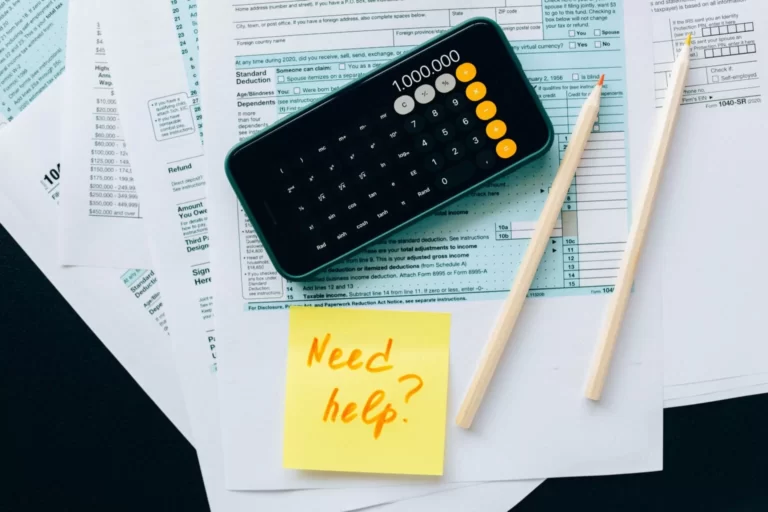Key Takeaways
- Believe that you can create an efficient budget.
- Create realistic saving and budgeting goals.
- Keep space for irregular expenses in your budget.
- Test-drive and choose the budget after consideration.
Basically, budgeting is watching your money. It is a way to make sure you do not spend more than you bring in, and is a way to start saving for the future. Even if you are a person who lives for and in the moment, saving for the future is important.
What would you do if you decided one Friday night to jump in your car and start driving to the beach? If you got in an accident, could you afford a rental? If you ran over road debris, could you replace one or more tires?
Budgeting is a way to save yourself from embarrassing phone calls for help. It is a way to prevent spending more than you have, or forgetting to pay an important bill. The last thing anyone wants is for their water, gas, or electricity to get shut off.
Budgeting will prepare you for any emergency that you come across. Nonetheless, it will also help you pay off debt faster, raising your credit score.
The Xtra Factor:-
Traditional Budgeting –
Budgeting, like any other process in our world, also has its traditional form. Traditional budgeting could be started by writing down your household, transportation, food, and debt expenses. Then, compare all your expenses to your monthly income. And finally, conclude how much extra you are spending and how much of that spending could go into saving. It is also line-budget because it breaks down everything for details.
What Are Different Types Of Budgeting Methods?
Ever since inflation has hit the capitalist economy, budgeting has been an essential aspect of every household. There are different types of budgeting methods. We have 6 different types of budgeting methods for you in this blog.
1. The 50/30/20 Budget
The 50/30/20 budget, as you can likely figure out, is a way to divide up your income into categories. Similarly, you put half your income into essentials like food, utilities, shelter, transportation, medication and so on.
30% goes to buying what you really want whether entertainment, amazon shopping, going out; or new clothes that aren’t needed but you really want, and things of that nature. And the last 20% goes towards finance goals such as savings or stocks.
Pros:
- Flexible yet clear spending guidelines.
- Saving is of the top most priority in this budgeting.
Cons:
- Not detailed enough as division is broad.
- Does not help in identifying overspending areas.

Our free “Budgeting For Beginners” eBook is your secret weapon to financial peace of mind.
Don’t miss out!
(By subscribing, you agree to our terms & conditions, privacy policy, and disclaimer.)
2. The Zero-Based Budget
Zero based budgeting is an accounting technique that was developed in the 1960’s to 1970’s by a guy named Pete Pyhrr who was an account manager at Texas Instruments, the calculator people! Zero Based Budgeting helps you assign your money to savings, debt and expenses. You can change the categories every month, or you can change them up based on upcoming events like. Birthdays or other celebrations, or even the dreaded tax day if you owe!
How To Start?
You need to know how much money. You are bringing in first of all, and you also need to know what your expenses are. Accordingly, you can either track them for a few months or you can look back at your bank and credit card statements and print them out and use different colored highlighters to track your spending. This is a fun choice for the artistic type of person!
Okay, So Give Me An Example!
Monthly Income: $4,000.00
Rent/Mortgage $1,575
Gas Utility $88
Water $25
Electric $120
Gas for Vehicle $80
Car Payment $450
Student Loan Payment $250
Groceries $300
Insurance $275
Credit Card Payments $500
Entertainment $100
Amazon Gift Card Balance $100
Savings $137
Amount Left: $0.00
Is There An Easier Way?
This way is actually super easy! There are actually computer software programs that can help you achieve this, or even apps for your phone or tablet! Some of the apps let you change stuff around…say your water bill doubled due to a leaky toilet…. I like to always put money onto an amazon gift card balance for those last-minute moments when you forget a birthday or break your favorite shoes.
Pros:
- You know what money is coming in?
- Get details on how much is going out and where it is going?
- Next, this plan is fully customizable;
- For businesses, managers will need to justify all of the operating expenses they manage.
Cons:
- If you buy something unexpected and out of your categories, it will throw off your whole budget;
- Also, it can be time consuming to set up and make adjustments;
- If you are a freelance worker or your monthly income varies, this could be problematic;
- Promotes more short-term thinking instead of long-term planning.
How Can I Incorporate Zero Based Budgeting Into My Business?
You can actually incorporate zero based budgeting in stages. You need to identify and come up with descriptions for each category, often called decision packages. Moreover, you would evaluate the decision packages to make sure they align with the overall goal of the company. Next you need to prioritize the packages or groups from most important to least important. Finally, you would allocate resources/amount of money to each section.
3. The 60% Solution Budget
Just like a few of the other budgeting methods mentioned here, this methods allocates a portion of your income dedicated towards committed expenses (60%) such as rent, gas, utilities, debts, groceries and so on. The other 40% can be broken down into long- and short-term savings and money to just spend on whatever you feel like.
Some like to divide the rest 40% into 20% for saving and other 20% for non-essential spending.
Pros:
- High freedom and flexibility.
- Simple, non-time consuming budgeting method.
Cons:
- Non-detailed track on overspending.
- Savings can not always be planned as it is individual choice in this method.
4. The Envelope Budget
It is very close to traditional budgeting but simpler and involves cash only. You divide the categories where you need cash most, like gas, dining out, entertainment, groceries, etc. You take different envelopes and name them per the categories you wish. You can then put cash in each of them, and you can’t spend more when the cash is up. Hence managing your financing better.
Pros:
- Spending cash may lead you to spend less.
- A tangible way of spending might save more.
Cons:
- Saving is not directly addressed.
- Extra time and effort for taking out cash each month.
5. The Value-Based Budget
Your priorities in life will decide how you spend your money. If you prioritize retirement savings over vacation spending, this budget plan is for you. It works for someone who is a value-based budgeter, like living in a place with few amenities to save more money for your kids’ college fund. If you are a big-picture person, this budget must be customized.
Pros:
- You spend more on valuable things and reduce unessential spending.
- You save more money as you focus on high-value areas.
Cons:
- The value of each of your items in budgeting might be difficult to quantify.
- Value for any item might change with life changes occurring, requiring budget reassessing.
6. The Pay For Yourself Budget
You put money in your savings before any spending. You prioritize savings above your spending. This budgeting method will help you achieve a long-term goal of buying a home or retiring at an age as you save more. It requires you first to analyze your necessity spending and figure out if you can afford to save. It would help if you were not too rigid with your saving plan here, so your essential spending suffers.
Pros:
- Saving is prioritized, the end goal is achieved as desired.
- You save first, so you need to track expenses.
Cons:
- You may need to track your expenses to gain insight into spending.
- Overdrafting may occur with more saving and less spending.
Manual And Digital Budgeting Options
(A) Digital Budgeting Option
You must decide if you like managing your budget independently or using technological tools. If personal finance software allows automated savings and easy access to updated information, it can be beneficial to use them. But if you are not technologically savvy and the software doesn’t ease budgeting, you might want to look at a more hands-on approach.
(B) Manual Budgeting Option
If you like using pen and paper for your budgeting, you can write down your finances and get a broad picture of how to budget and which budgeting method to choose to balance finances. You may be skeptical about linking your bank account to personal finance management software. You should choose a physical method to budget better.
Conclusion
Budgeting is a skill, but it is an easy one. You can learn about budgeting through various methods. It is essential to manage your finances to have savings and ensure your necessities are fulfilled. You must know your money to understand which area requires your attention and, hence, choose the best budgeting method among different types of budgeting methods to balance your finances.










